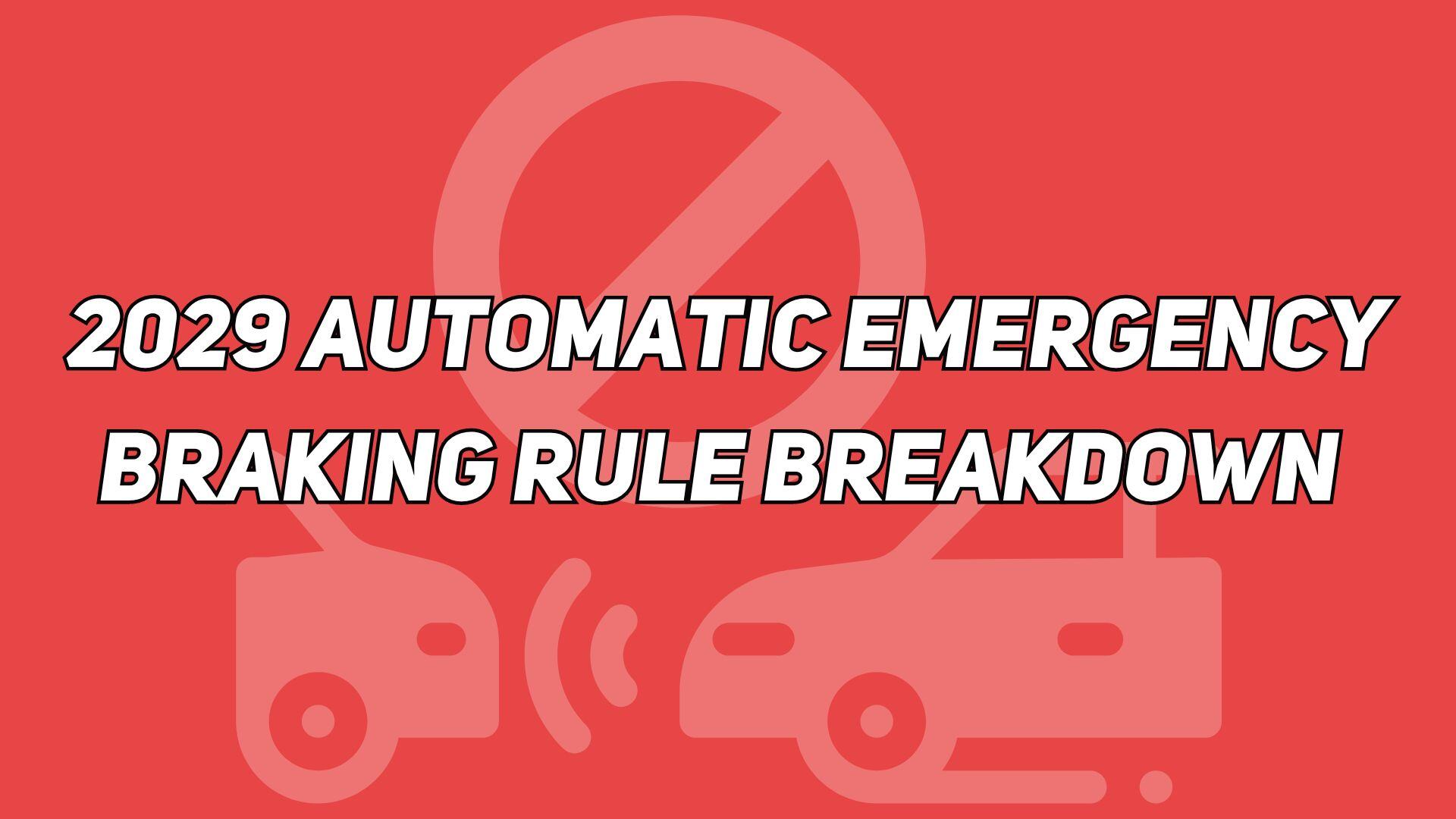2029 Automatic Emergency Braking Rule Breakdown
Certified Content Writer at Big Valley Auto Auction. Victor likes to mix storytelling and humor into his articles.
In the TV show Knight Rider, Michael Knight drove a car named “KITT,” which was a vehicle that could automatically brake. While this seemed like a fantasy in the 1980s, we all might actually have our own “KITT” by 2029.
On May 9, 2024, the National Highway Traffic Safety Administration (NHTSA) finalized the Automatic Emergency Braking (AEB) rule, requiring all vehicles sold in the United States to have automatic emergency braking as a standard feature by 2029. We’re going to break down this new rule and how it will affect the automotive industry.
What is the Automatic Emergency Braking Rule?
The Automatic Emergency Braking rule is a rule that requires all vehicle manufacturers to include automatic emergency braking (AEB) systems in all vehicles by 2029. Under the rule, all vehicles must be able to perform the following requirements:
- Stop and avoid collisions
- Detect pedestrians
Stop and Avoiding Collisions
In 2023, there were 558,953 car crashes in our home state of Texas. 2,630 of those crashes were due to speeding. By 2029, vehicles must be able to automatically stop at up to 62 miles per hour, to avoid collisions with other vehicles.
If AEB systems are as successful as expected, the number of car collisions could potentially go down after 2029.
Detecting Pedestrians
Most people are taught at a young age to look both ways before crossing the street. While it’s a simple safety practice and only takes about 2 seconds to perform, not everyone follows this advice.
Under this new rule, AEB systems must be able to detect pedestrians during the day and night. They must also be able to automatically apply the brakes at speeds up to 45 mph to avoid hitting them.
While this rule is good for detecting someone crossing in front of your vehicle, it’s also beneficial to drivers who aren’t paying attention to the road. Cell phone use causes approximately 1.6 million car crashes a year. With automatic braking systems in place, it could be possible to prevent those types of accidents. (This doesn’t mean you should continue texting and driving. Keep your eyes on the road, regardless.)
What is the Purpose of this Rule?
In 2023, approximately 40,990 people died in traffic crashes. The Automatic Emergency Braking rule aims to prevent deaths and injuries caused by car accidents every year.
According to a press release from the National Highway Traffic Safety Administration, “Making this safety feature standard, rather than a luxury, is part of the Department’s National Roadway Safety Strategy to address the crisis of deaths on our roads.” They also claim the rule “will save at least 360 lives a year and prevent at least 24,000 injuries annually.”
When Will This Rule Go Into Effect?
The Automatic Emergency Braking rule is scheduled to go into effect on September 1st, 2029.
The official document released by the NHSTA states “Vehicles produced by small-volume manufacturers, final-stage manufacturers, and alterers must be equipped with a compliant AEB system by September 1, 2030.”
With about 5 years left until the rule takes effect, that gives you enough time to binge watch Knight Rider to see what to expect from your car.
Is This Rule Practical?
A car that automatically brakes with no issues is practical in TV and movies. But what about real life? Can automatic braking be done safely? Certain members of the automotive industry are questioning how realistic, and safe, this new rule is.
The Alliance for Automotive Innovation, which represents Ford, General Motors, Stellantis, Toyota, and most major automakers, submitted a petition for reconsideration of the new rule. Here are a few aspects of the rule that the AAI argue are not practical:
- Reveal of pedestrian
- Pedestrian crossing
- Consistency
Reveal of Pedestrian
The petition takes aim at the test drives, pointing out that “the pedestrian is revealed in as little as 1.015 seconds.” This means the vehicles must respond in less than half a second, which is “well beyond the capability of any known AEB system.”
Pedestrian Crossing
If you’re in the middle of the road and you see a car rushing at you, are you going to jump out of the way or keep on walking? According to the petition, test runs were performed “under the requirement that the pedestrian will continue crossing.” This means that the results of the test drives are based on the idea that a person will keep on walking across the street when a vehicle is driving towards them.
Consistency
Alliance for Automotive Innovation president and CEO, John Bozzella, wrote in a letter to congress that NHTSA’s own testing had some issues. Their data revealed that only one vehicle met the stopping distance requirements.
This is like having surgery by a doctor who only successfully performed surgery 1 time out of 20. They might not be the most reliable option and your safety would be at risk.
Will This Rule Increase the Price of Vehicles?
Just like any new device that comes out with a new feature, the price will go up. John Bozzella made the following statement in his letter to congress: “Yes, this rule will make vehicles more expensive, but the real issue isn't cost—it's cost/benefit. NHTSA's action will require more costly systems that won't improve driver or pedestrian safety.”
This basically means that you’ll be paying more money for features that more than likely won’t do what they’re supposed to. You’ll pay for automatic emergency brakes, but would still be just as likely to get in a crash than prevent one.
Do I Understand the Importance of The Automatic Emergency Braking Rule?
The Automatic Emergency Braking rule is set to take effect by 2029. Although its purpose is to prevent car accidents, it has not gone over well with certain sections of the auto industry.
While we’re still 5 years until it goes into effect, understanding its importance as soon as possible will help you prepare for any upcoming changes.
If you’re a dealer looking to buy or sell inventory, click the button below to speak with our dealer registration specialist to get you registered with Big Valley Auto Auction.
Not ready to talk? That’s okay! First, learn more about what it’s like to buy and sell at Big Valley Auto Auction by clicking the image below:




